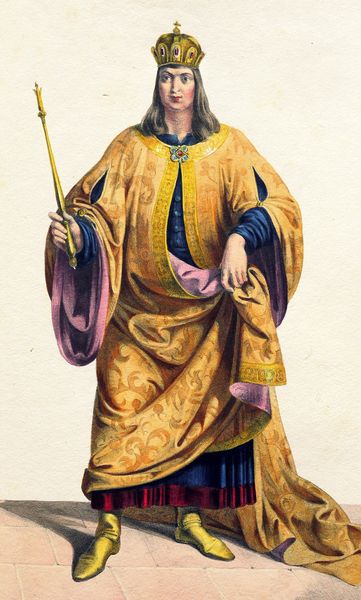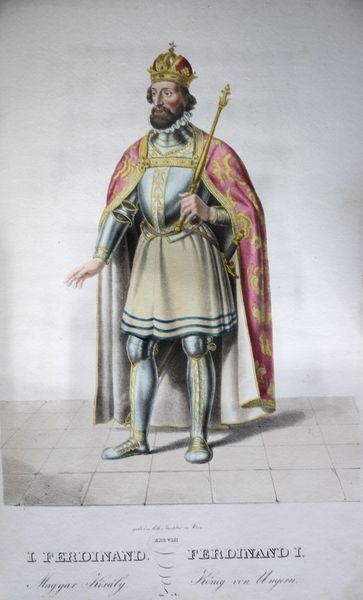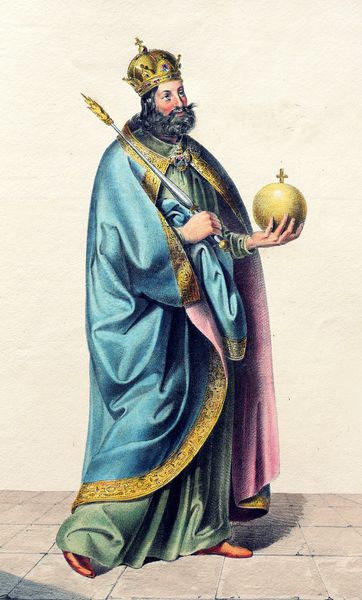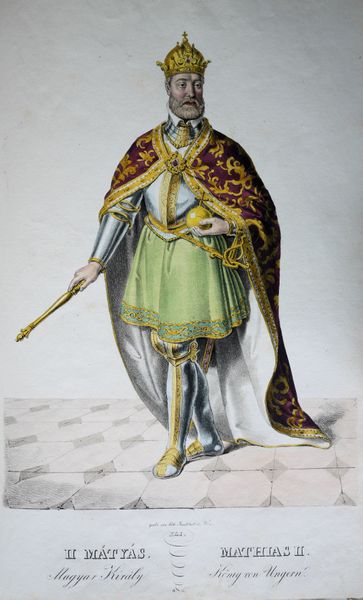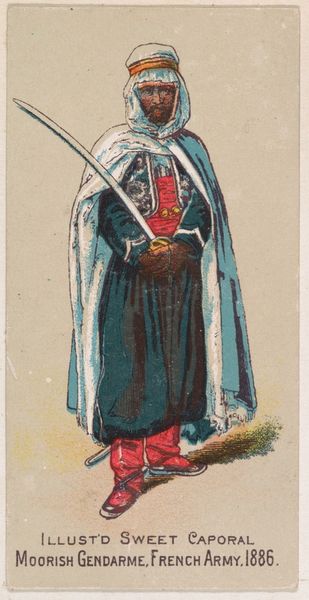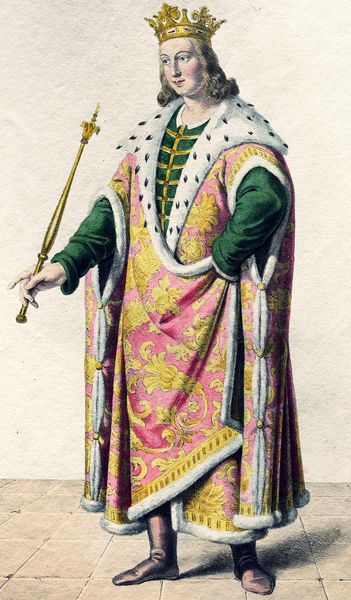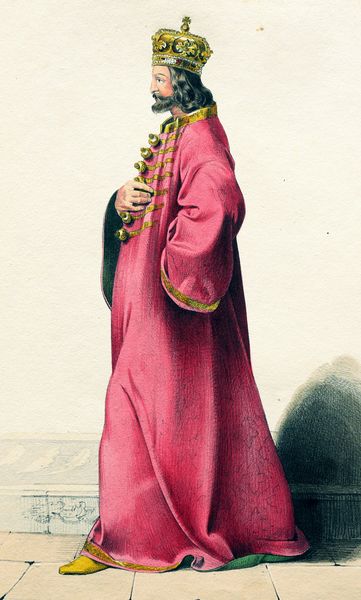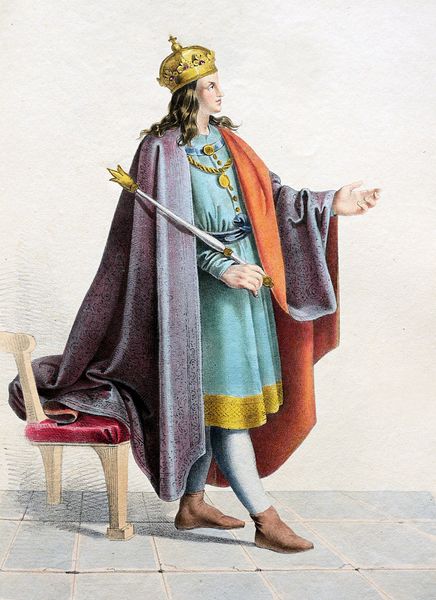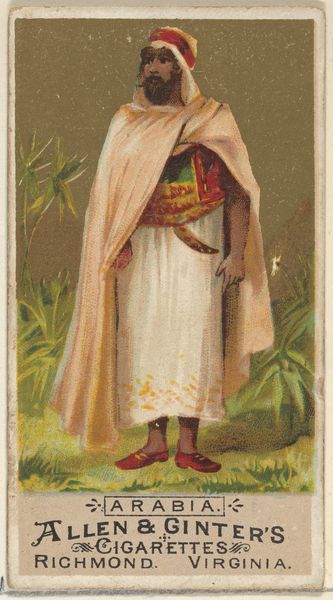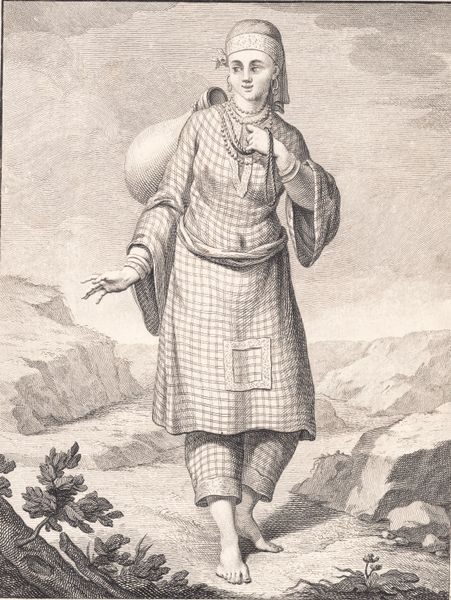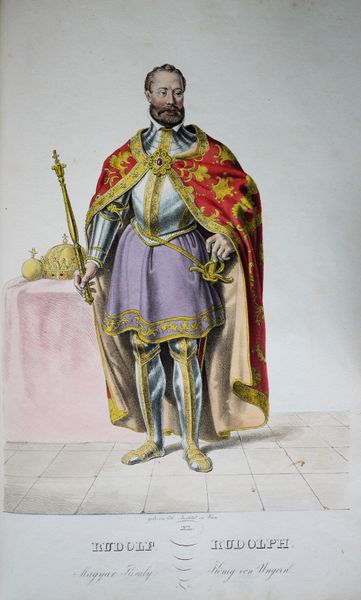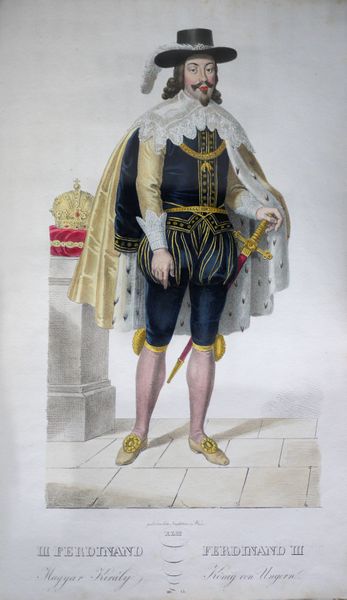
drawing, watercolor
#
portrait
#
drawing
#
charcoal drawing
#
watercolor
#
coloured pencil
#
romanticism
#
portrait drawing
#
watercolour illustration
#
history-painting
#
academic-art
Copyright: Public domain
Curator: Immediately, I’m drawn to the way light catches on the fabrics in this portrait. Editor: We’re looking at a piece called "Salomon" by Josef Kriehuber, and though undated, the artistic style suggests the Romantic era. It employs drawing and watercolour techniques, with perhaps charcoal and colored pencil elements too. Curator: Absolutely, the layered materials fascinate me. What sort of resources would Kriehuber have access to, and how does this portrayal tie into broader notions of royalty and status linked to materiality itself? The fur trim, the gold orb... it’s a cascade of symbols communicated through skillful rendering. Editor: Yes, and this image engages with history-painting traditions, specifically, depicting Salomon, a king of Hungary. The lithograph served as visual propaganda and historical document. The very act of portrayal—the king, his garb, the crown—legitimized political power through institutional visibility, don't you think? Curator: Precisely, how this image circulated would be crucial, from its edition size to who possessed copies. That impacted its ability to shape perceptions. Were these materials expensive to work with or easily accessed by the masses? Such things greatly affect distribution and social interpretation. The paper used would tell an intriguing story of commerce and colonialism, or not. Editor: Furthermore, one should consider Kriehuber's other commissions. Who commissioned this portrait and what political ends did they serve? Also, consider how such artwork helped form historical narratives within institutions like museums and schools. It all informs the visual culture of the time. Curator: Well said. The more that I gaze at "Salomon," the more the confluence of materials and making reveals just how the image became symbolic capital. Editor: It's an interesting glimpse at the intersections between artistry, authority, and the propagation of political ideologies in 19th-century Europe.
Comments
No comments
Be the first to comment and join the conversation on the ultimate creative platform.
